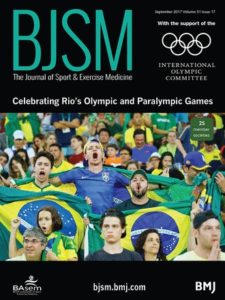Aim To prospectively examine the neurocognitive, postural, dual-task and visual abilities of female Olympic-style boxers before and after participation in a tournament.
Methods Sixty-one females completed the modified Balance Error Scoring System (mBESS), King-Devick test and 3 m timed-up-and-go test in single-task and dual-task conditions. A subset (n=31) completed the CogState computerised neurocognitive test. Initial testing was completed prior to the 2016 Women’s World Boxing Championships; each participant repeated the testing protocol within a day of elimination. No participant sustained a concussion. Pretournament and post-tournament performance variables were compared using paired t-tests or Wilcoxon signed-rank tests.
Results Participants completed a mean of 7.5±4.5 rounds of Olympic-style boxing over 2–8 days. Post-tournament scores were significantly lower than pretournament scores for total mBESS (2.2±1.9 errors vs 5.5±2.9 errors, p<0.001, d=1.23) and King-Devick time (14.2±3.9 s vs 18.0±8.3 s, p=0.002, d=0.53). Processing speed was significantly faster after the boxing tournament (maze chase task: 1.39±0.34 correct moves/ second vs 1.17±0.44 correct moves/second, p=0.001, d=0.58). No significant changes across time were detected for the other obtained outcome variables.
Conclusions Female boxers demonstrated either improvement or no significant changes in test performance after competing in an Olympic-style boxing tournament, relative to pretournament performance. As many of the test tasks were novel for the boxers, practice effects may have contributed to improved performance. When there is a short time frame between assessments, clinicians should be aware of potential practice effects when using ringside neurological tests.
Summary Points:
- No concussoins were diagnosed during the tournament and no boxers were stopped early due to a suspected concussion.
- K-D test performance was significantly faster after the tournament compared with before the tournament as was processing speed.

